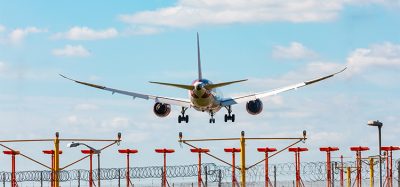The evolution of ATC
Posted: 3 October 2012 | Bill Shea, former FAA Associate Administrator | No comments yet
From the simple, yet antiquated Air Traffic Control system of the 1930s to today’s new multi-billion dollar NEXT GEN satellite programme which is currently being developed, the progress of worldwide ATC has been pushing forward at an astonishing rate.
Over the years, the world’s ATC systems have experienced dramatic success. As a pilot, I’ve observed and flown this great ATC programme. Credit should be given to national governments, research personnel, engineers, equipment manufacturers, airports, airlines, navigation experts as well as private and government ATC entities. But perhaps, most importantly, credit should be given to the pilots and controllers who are so dedicated to making the system work safely and efficiently.
I recall, vividly, flying the old low frequency airways and airport approaches with the old Automation Direction Finding Equipment (AFD). After this came the Visual Omni Range (VOR), and Instrument Landing System (ILS) and the Ground Control Approach (GCA), where the controller handled both approach azimuths and verbally directed pilots to a safe landing.
From the simple, yet antiquated Air Traffic Control system of the 1930s to today’s new multi-billion dollar NEXT GEN satellite programme which is currently being developed, the progress of worldwide ATC has been pushing forward at an astonishing rate.
Over the years, the world’s ATC systems have experienced dramatic success. As a pilot, I’ve observed and flown this great ATC programme. Credit should be given to national governments, research personnel, engineers, equipment manufacturers, airports, airlines, navigation experts as well as private and government ATC entities. But perhaps, most importantly, credit should be given to the pilots and controllers who are so dedicated to making the system work safely and efficiently.
I recall, vividly, flying the old low frequency airways and airport approaches with the old Automation Direction Finding Equipment (AFD). After this came the Visual Omni Range (VOR), and Instrument Landing System (ILS) and the Ground Control Approach (GCA), where the controller handled both approach azimuths and verbally directed pilots to a safe landing. Both those systems, although safe, took time to execute. Fortunately, the British developed excellent radar coverage during World War II, where the radar was used extensively thereafter in the development of civil and military aviation.
Join us live: Shaping the Next Generation of Hold Baggage and Air Cargo Screening
Join us live for an insightful webinar on 11th December at 14:00 GMT, in collaboration with Smiths Detection, as we explore the strategic balance of operational efficiency, regulatory compliance, and sustainability in high-volume security environments.
This session offers a focused look into future-proofing your security strategy.
Key learning points
- Cost Reduction: Strategies to minimize bag travel time while simultaneously reducing operational costs.
- Regulatory Roadmap: Insights into the next wave of regulatory changes and their impact on future investment decisions.
- Sustainable Systems: Practical approaches to building sustainability into security systems and lowering the total cost of ownership (TCO).
- Scalable Solutions: Real-world examples of scalable systems supporting current airport growth and preparing for tomorrow.
Register now for expert insights, case studies, and actionable strategies on operational efficiency!
Time marched on. Aviation grew at an incredible rate, and the infrastructure was unable to keep up with airport capacity demand, meaning many large airports became congested causing gridlock at some larger hubs. New, safe and creative research was urgently required.
Airports were starting to transform into small cities. The demand for passenger travel grew and so did the airliners themselves, with many now being able to carry around 300 to 400 passengers. In terms of speed, planes were travelling in excess of 500mph. This upsurge meant that ATC systems had to advance quickly to maintain the growing trend. Eventually, terminal and tower approach radar facilities were developed.
With the FAA’s Advanced Automation System Project (AAS) being developed in the early 1980s, ATC now incorporated Enroute Control Centres (ECC), Distance Measuring Equipment (DME), Approach and Departure Control (TRACON), advanced tower equipment and new improved ground control capability. At this time, there was much talk about triple-simultaneous approaches, converging approaches to one runway, and micro-wave landing systems were installed at some airports. Advanced Automations Systems (AAS) and Wide Area Augmentation Systems (WAAS) were also developed. These initiatives, alongside the improved weather reporting technologies meant that the sector was in an extremely good state.
The U.S. Congress continues to support the development of the FAA. The recent Airport and Airways Trust fund hovers around $12 billion annually, garnered from a 7.5 per cent tax on domestic airline tickets. As I recall, the FAA’s budget in the 2011 fiscal year, was around $16.4 billion, with $7.6 billion allocated for ATC operations.
Today’s advanced automated U.S. ATC system is transitioning to the new NEXT GEN ATC satellite system, which will rely on GPS instead of radar to identify aircraft and allow more aircraft into the sky. The system will be safe, increase efficiency, save time, reduce emissions, reduce noise, save money and speed up aircraft departures and arrivals.
What about the future? It is secure because air transport growth is guaranteed. Future supersonic, hypersonic and space airliners will fly the sky. The ATC experts will meet the challenge and have the vigour, the creativity and innovation to build even newer ATC systems to safely accommodate the future.
Stay Connected with International Airport Review — Subscribe for Free!
Get exclusive access to the latest airport and aviation industry insights from International Airport Review — tailored to your interests.
✅ Expert-Led Webinars – Gain insights from global aviation leaders
✅ Weekly News & Reports – Airport innovation, thought leadership, and industry trends
✅ Exclusive Industry Insights – Discover cutting-edge technologies shaping the future of air travel
✅ International Airport Summit – Join our flagship event to network with industry leaders and explore the latest advancements
Choose the updates that matter most to you.
Sign up now to stay informed, inspired, and connected — all for free!
Thank you for being part of our aviation community. Let’s keep shaping the future of airports together!
Issue
Related topics
Air traffic control/management (ATC/ATM), Airport development

















